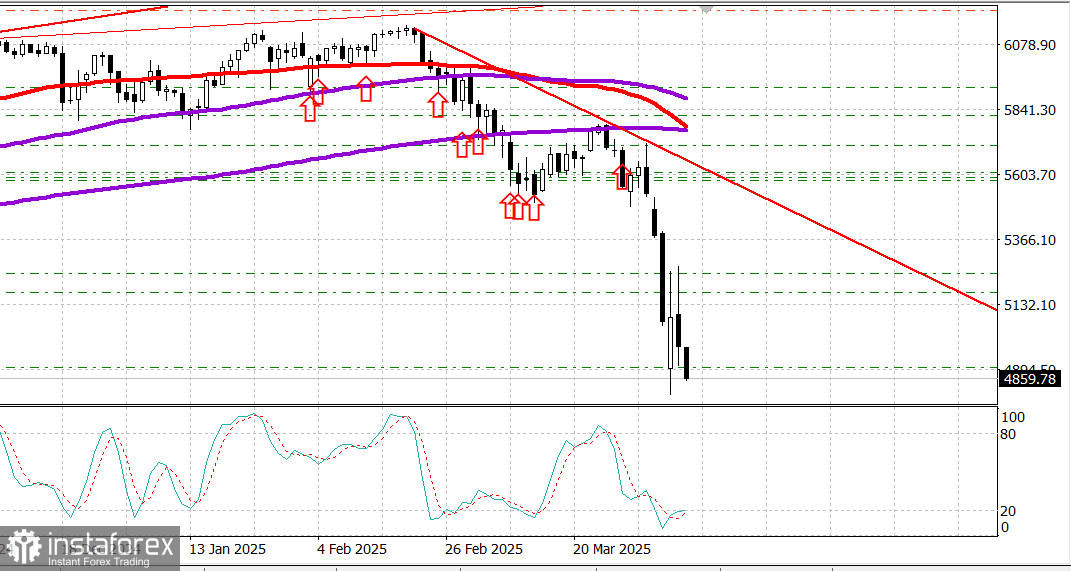
S&P 500
The market tries to hold support
Main US indices on Tuesday: Dow -0.8%, NASDAQ -2.2%, S&P 500 -1.6%, S&P 500 at 4983, range 4800–5700.
It was another volatile session for the stock market. A strong rally began immediately after the opening, pushing the S&P 500 and Nasdaq Composite up by 4.1% and 4.6%, respectively.
The Dow Jones Industrial Average was more than 1,400 points higher than yesterday, at its best level of the day.
However, the main indices closed in negative territory, with the S&P 500 (-1.6%) finishing below the 5000 mark.
Catalysts for the downturn included the White House's confirmation that 104% tariffs on imports from China would take effect at midnight, as well as weak demand in the $58 billion 3-year bond auction.
Stocks had already been slowly declining before these catalysts came into play, suggesting that some early-session profit-taking may have contributed to the reversal.
Selling pressure in megacaps and chipmakers was another driver of the drop. Apple (AAPL 172.42, -9.04, -5.0%), which had gained 4.9% at its intraday high, and NVIDIA (NVDA 96.30, -1.34, -1.4%), which had surged 8.4% during the day, ended among the biggest losers in the space.
Each sector of the S&P 500 was higher during the early rally, but every sector turned lower by the close.
The materials sector (-3.0%) and consumer goods sector (-2.5%) posted the worst performance, while financials saw the smallest decline, falling just 0.4%.
The US Treasury market also experienced a sharp reversal. The 10-year yield, which had risen 11 basis points to 4.26%, fell back to 4.17% by the end of the session.
Tuesday's economic calendar was limited to the NFIB Small Business Optimism Index, which dropped to 97.4 in March from 100.7.
Year-to-date:
Dow Jones Industrial Average: -11.5%
S&P 500: -15.3%
S&P Midcap 400: -17.9%
Nasdaq Composite: -20.9%
Russell 2000: -21.1%
Energy: Brent crude trades at $61.10, a year-to-date and multi-year low, under clear pressure from expectations of weakening demand for resources amid the US–China trade war.
It has been revealed that China has begun settling oil transactions in yuan, a major challenge to the US dollar, which had previously been the exclusive currency used in global oil trade. Clearly, this is also part of China's response to Trump's tariff actions.
Conclusion: Hold long positions from support levels. Right now, it presents a decent buying point for the US market via the SPX instrument (S&P 500 equivalent). However, these investments should be made without leverage, based only on personal funds, as new waves of market decline remain possible.
Mikhail Makarov, for more analytics.





















